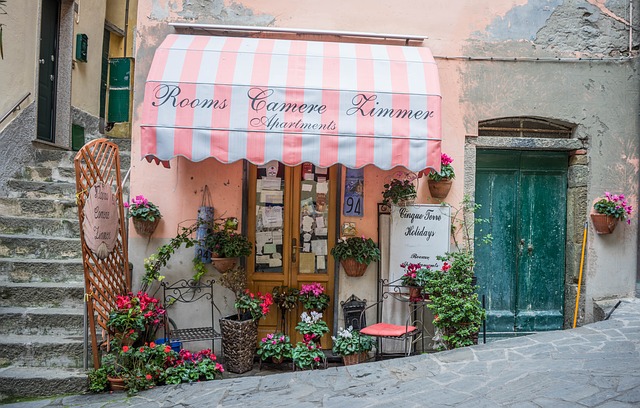Retractable awnings vs fixed awnings
Contents |
[edit] Introduction
Awnings can provide a way to protect properties from sun damage and provide a safe space protected from the heat of solar radiation and harmful UV rays. However, with a range of designs and styles on the market, it can be difficult to know which option is best.
This article outlines the difference between the two most popular choices – retractable awnings and fixed awnings.
[edit] Retractable awnings
One of the most popular options on the market, retractable awnings are able to open and retract as required, allowing them to cover a window, an al fresco area, an exposed facade and so on.
Many people choose this style due to its flexibility, as it can change position with the season, the occasion, or the time of day. For example, if it is a mild autumn day, you may find you’re not in need of any form of coverage, or if it’s a sunny summer afternoon, you may want a shady place to entertain outdoors and extend your retractable awnings accordingly.
Made from a durable fabric, purchasers can generally choose between acrylic, canvas or mesh, depending on their needs. There are also options to consider when it comes to opening and closing. A crank is less expensive, whilst motorisation allows push-button operation.
[edit] Fixed awnings
Unlike their retractable counterparts, fixed awnings are designed to be installed exactly where they are needed, providing permanent cover in one place. These can be a good choice for those who want awnings to become part of the building itself.
Frequently used by businesses as they can be used to incorporate signage, such as the name and contact details of the establishment, fixed awnings have recently become popular in homes too, offering an affordable option for those sticking to a tight budget.
However, rather than covering an al fresco area, they are primarily used for shading windows, increasing privacy and blocking out the sun and glare. Depending requirements, it is possible to choose a blockout style, which stops light from penetrating at all, or a more translucent option, which simply filters light to a more comfortable level.
When choosing fixed awnings, it is important to look for a fabric and a frame that can stand up to the elements, as they can’t be retracted during poor weather conditions. Check for a fabric that is UV and mould resistant.
[edit] Related articles on Designing Buildings Wiki
- Anticlastic.
- Architectural fabrics.
- Carbon fibre.
- Catenary.
- ETFE.
- Fabric structures.
- Inflatable building.
- Natural fibre reinforced polymers (NFRPs) in the construction industry IP 14 14.
- Nylon.
- Plastic.
- Polyvinyl chloride PVC.
- Tensile structures.
- Thermal behaviour of architectural fabric structures.
- The history of fabric structures.
- The development of structural membranes.
- The thermal behaviour of spaces enclosed by fabric membranes.
- The structural behaviour of architectural fabric structures.
- Types of building.
- Types of roof.
Featured articles and news
One of the most impressive Victorian architects. Book review.
Common Assessment Standard now with building safety
New CAS update now includes building safety questions as mandatory.
RTPI leader to become new CIOB Chief Executive Officer
Dr Victoria Hills MRTPI, FICE to take over after Caroline Gumble’s departure.
Social and affordable housing, a long term plan for delivery
The “Delivering a Decade of Renewal for Social and Affordable Housing” strategy sets out future path.
A change to adoptive architecture
Effects of global weather warming on architectural detailing, material choice and human interaction.
The proposed publicly owned and backed subsidiary of Homes England, to facilitate new homes.
How big is the problem and what can we do to mitigate the effects?
Overheating guidance and tools for building designers
A number of cool guides to help with the heat.
The UK's Modern Industrial Strategy: A 10 year plan
Previous consultation criticism, current key elements and general support with some persisting reservations.
Building Safety Regulator reforms
New roles, new staff and a new fast track service pave the way for a single construction regulator.
Architectural Technologist CPDs and Communications
CIAT CPD… and how you can do it!
Cooling centres and cool spaces
Managing extreme heat in cities by directing the public to places for heat stress relief and water sources.
Winter gardens: A brief history and warm variations
Extending the season with glass in different forms and terms.
Restoring Great Yarmouth's Winter Gardens
Transforming one of the least sustainable constructions imaginable.
Construction Skills Mission Board launch sector drive
Newly formed government and industry collaboration set strategy for recruiting an additional 100,000 construction workers a year.
New Architects Code comes into effect in September 2025
ARB Architects Code of Conduct and Practice available with ongoing consultation regarding guidance.
Welsh Skills Body (Medr) launches ambitious plan
The new skills body brings together funding and regulation of tertiary education and research for the devolved nation.
Paul Gandy FCIOB announced as next CIOB President
Former Tilbury Douglas CEO takes helm.
























